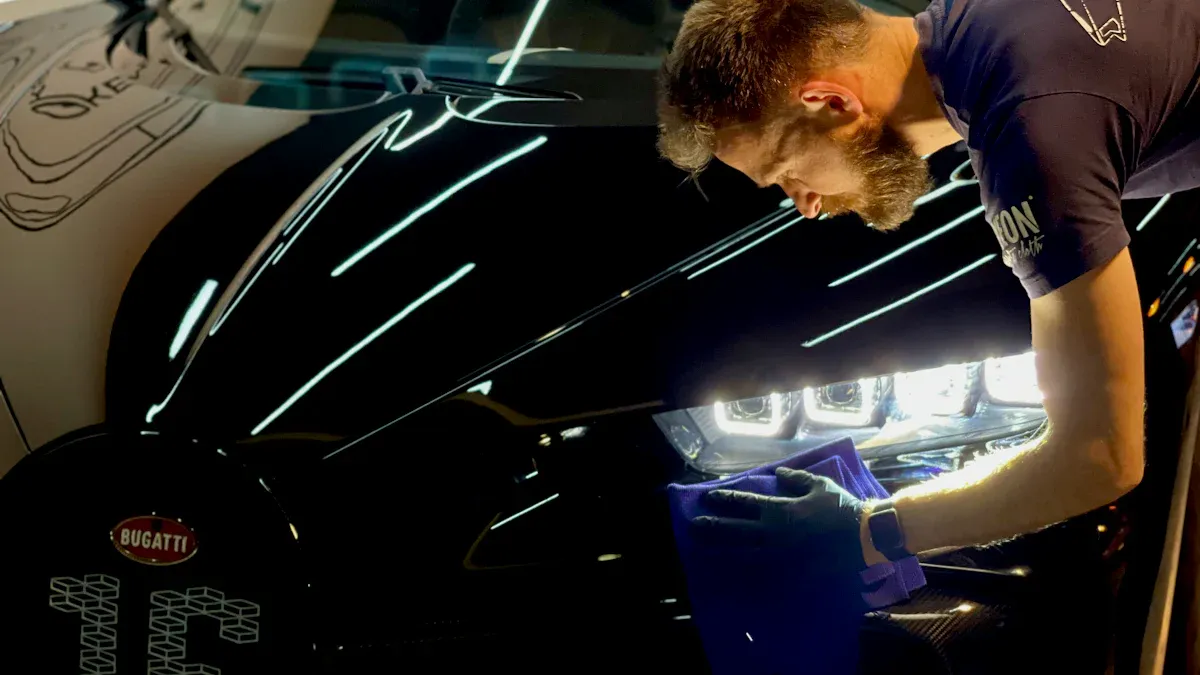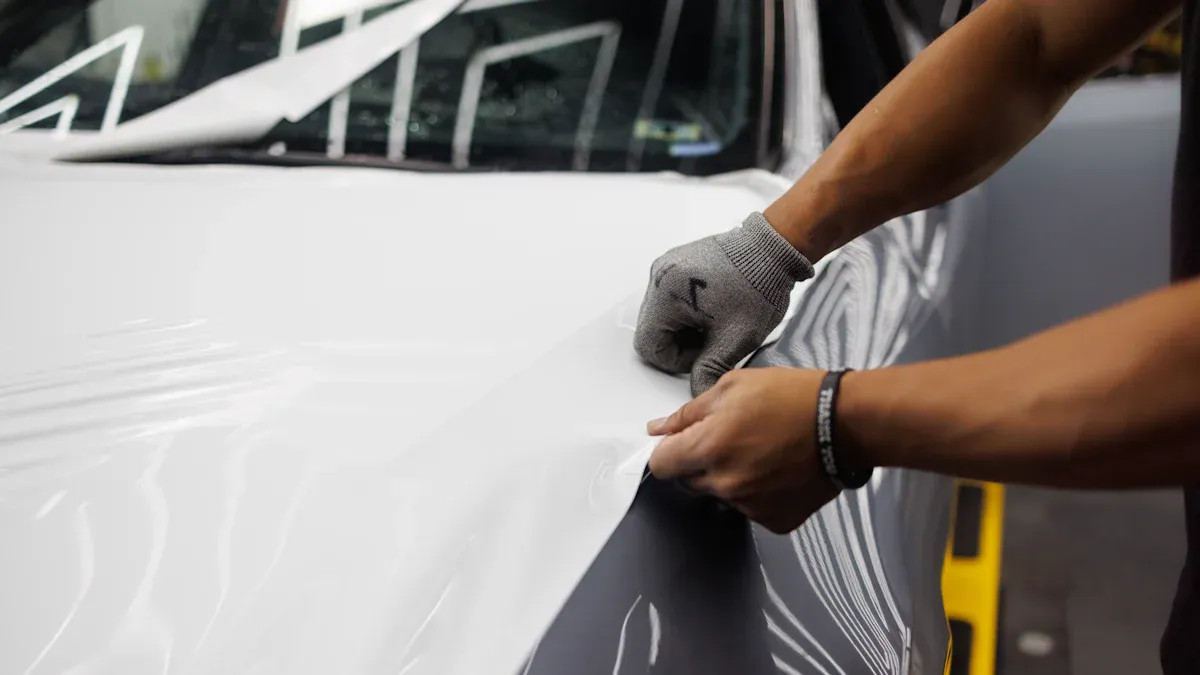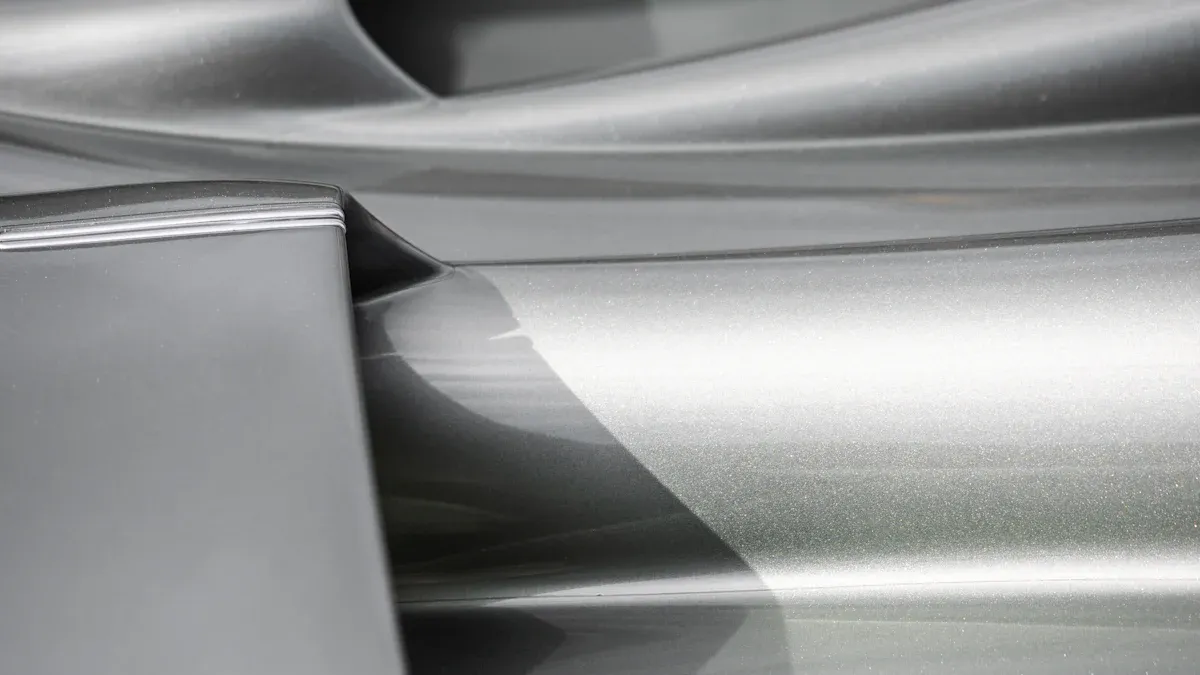
TAC coating transforms automotive components by offering unmatched hardness and wear resistance. You benefit from its ability to withstand extreme conditions, ensuring components last longer and perform better. This coating also resists corrosion effectively, making it ideal for challenging environments. Its thermal stability enhances performance, making TAC coating a revolutionary solution for modern vehicles.
Key Takeaways
- TAC Coating makes car parts last longer by reducing damage. This helps save money on repairs and replacements.
- 코팅 녹에서 부품 보호 and damage, keeping them safe and working well in tough conditions.
- TAC Coating handles heat better, so parts work well in very hot or cold weather. This makes cars run more efficiently.
What is TAC Coating?
Definition and Overview
TAC Coating, short for Tetrahedral Amorphous Carbon Coating, is a cutting-edge material designed to enhance the performance of automotive components. It belongs to the family of diamond-like carbon (DLC) coatings, known for their exceptional hardness and durability. You can think of it as a protective layer that shields parts from wear and tear, ensuring they last longer and perform better under demanding conditions.
This coating is applied using advanced deposition techniques, creating a thin yet incredibly strong layer on the surface of components. Its unique structure combines the hardness of diamond with the flexibility of graphite, making it a versatile solution for various automotive applications. Whether it’s engine parts, gears, or braking systems, TAC Coating plays a vital role in improving their efficiency and reliability.
TAC 코팅의 독특한 속성
사이트맵 코팅은 그것의 때문에 서 있습니다 remarkable properties. First, it offers unmatched hardness, which helps resist scratches and abrasions. This ensures that components maintain their integrity even in high-stress environments. Second, its low friction coefficient reduces wear, improving the efficiency of moving parts. You’ll notice smoother operation and less energy loss in systems coated with this material.
Another key feature is its excellent thermal stability. TAC Coating performs well under extreme temperatures, making it ideal for engine components exposed to heat. Additionally, it provides superior resistance to corrosion and oxidation, protecting parts from environmental damage. These properties make TAC Coating a game-changer for the automotive industry.
Key Benefits of TAC Coating for Automotive Components

Enhanced Durability and Longevity
TAC Coating significantly enhances the durability of automotive components. Its exceptional hardness protects parts from scratches and abrasions, even in high-stress environments. This means you can rely on components to maintain their structural integrity over time. The coating also reduces wear by minimizing friction between moving parts. As a result, systems operate more smoothly and require less frequent maintenance. By extending the lifespan of critical components, TAC Coating helps you save on repair and replacement costs.
Superior Corrosion and Oxidation Resistance
Corrosion is a major challenge for automotive components, especially those exposed to moisture, chemicals, or harsh weather. TAC Coating provides a robust barrier against these elements. It prevents rust and oxidation, ensuring that parts remain functional and efficient. For example, engine components coated with TAC Coating resist damage from exposure to oil and fuel. This resistance not only improves performance but also ensures safety by reducing the risk of component failure. You can trust this coating to protect your vehicle in even the toughest conditions.
Improved Thermal Stability and Performance
Automotive components often face extreme temperatures, especially in engines and braking systems. TAC Coating excels in such environments due to its outstanding thermal stability. It maintains its protective properties even under intense heat, ensuring consistent performance. This makes it ideal for parts like pistons, valves, and brake rotors. By improving heat resistance, TAC Coating helps you achieve better efficiency and reliability in your vehicle. It also reduces the risk of thermal damage, giving you peace of mind during demanding operations.
Why TAC Coating is a Game-Changer
Outperforming Traditional Coatings
TAC Coating outshines traditional coatings in several ways. Its unique combination of hardness and flexibility ensures superior protection for automotive components. Unlike conventional coatings, which may crack or wear down over time, TAC Coating maintains its integrity even under extreme conditions. This means you get a longer-lasting solution that reduces the need for frequent repairs or replacements.
Traditional coatings often struggle with high temperatures and friction. TAC Coating, however, excels in these areas. Its low friction coefficient minimizes wear on moving parts, while its thermal stability ensures consistent performance in heat-intensive environments. For example, engine components coated with TAC Coating operate more efficiently, saving energy and improving overall vehicle performance.
Impact on Automotive Manufacturing and Design
TAC Coating has revolutionized how automotive components are designed and manufactured. Its durability allows engineers to create lighter, more efficient parts without compromising strength. This opens up new possibilities for innovative designs that enhance vehicle performance and fuel efficiency.
In manufacturing, TAC Coating simplifies processes by reducing the need for additional protective layers. This streamlines production and lowers costs. You’ll also notice that vehicles with TAC-coated components require less maintenance, which translates to long-term savings for both manufacturers and consumers.
팁: TAC Coating enables manufacturers to push the boundaries of automotive design, creating vehicles that are both high-performing and cost-effective.
Contribution to Sustainability and Efficiency
Sustainability is a growing concern in the automotive industry, and TAC Coating plays a key role in addressing it. By extending the lifespan of components, this coating reduces waste and the demand for raw materials. You contribute to a greener planet by choosing vehicles with TAC-coated parts.
Additionally, TAC Coating improves energy efficiency. Its low friction properties reduce energy loss in moving parts, leading to better fuel economy. This not only saves money but also lowers carbon emissions. With TAC Coating, you support a more sustainable and efficient future for the automotive industry.
Comparison with Other Coating Technologies

Differences in Performance and Cost
When comparing TAC Coating to other technologies, you’ll notice significant differences in both performance and cost. TAC Coating offers superior hardness and wear resistance, making it ideal for automotive components that face constant stress. Unlike traditional coatings, it maintains its integrity under extreme conditions, such as high temperatures and friction. This ensures your vehicle operates efficiently and reliably over time.
Cost-wise, TAC Coating may have a higher upfront investment compared to conventional coatings. However, its durability and extended lifespan reduce long-term expenses. You save money on repairs and replacements because TAC Coating minimizes wear and tear. While other coatings might seem cheaper initially, they often require frequent maintenance, which adds to their overall cost. TAC Coating provides a more cost-effective solution in the long run.
Advantages Over Powder and Ceramic Coatings
Powder and ceramic coatings are common alternatives, but TAC Coating outperforms them in several key areas. Powder coatings offer decent protection against corrosion but lack the hardness and thermal stability of TAC Coating. Ceramic coatings, while strong, can be brittle and prone to cracking under stress. TAC Coating combines hardness with flexibility, ensuring components stay intact even in demanding environments.
Another advantage lies in its low friction properties. TAC Coating reduces energy loss in moving parts, improving fuel efficiency and overall performance. Powder and ceramic coatings don’t offer the same level of friction reduction, which limits their effectiveness in high-performance applications. By choosing TAC Coating, you get a solution that enhances both durability and efficiency, making it the superior choice for modern automotive needs.
TAC Coating transforms automotive components by enhancing their durability, performance, and sustainability. Its advanced properties make it a superior choice over traditional coatings. You benefit from its ability to improve vehicle efficiency and reduce maintenance needs. As automotive technology advances, TAC Coating will remain essential in shaping the future of vehicle manufacturing.
제품 정보
What types of automotive components benefit most from TAC Coating?
Engine parts, gears, and braking systems benefit the most. TAC Coating enhances their durability, reduces wear, and improves performance under extreme conditions.
Is TAC Coating environmentally friendly?
Yes! TAC Coating extends component lifespan, reducing waste and raw material usage. Its low friction properties also improve fuel efficiency, contributing to a greener automotive industry. 🌱
How does TAC Coating compare to traditional coatings?
TAC Coating outperforms traditional coatings in hardness, thermal stability, and wear resistance. It lasts longer, reduces maintenance, and ensures better performance in demanding environments.
팁: Choose TAC Coating for a cost-effective, high-performance solution that supports sustainability and efficiency.


